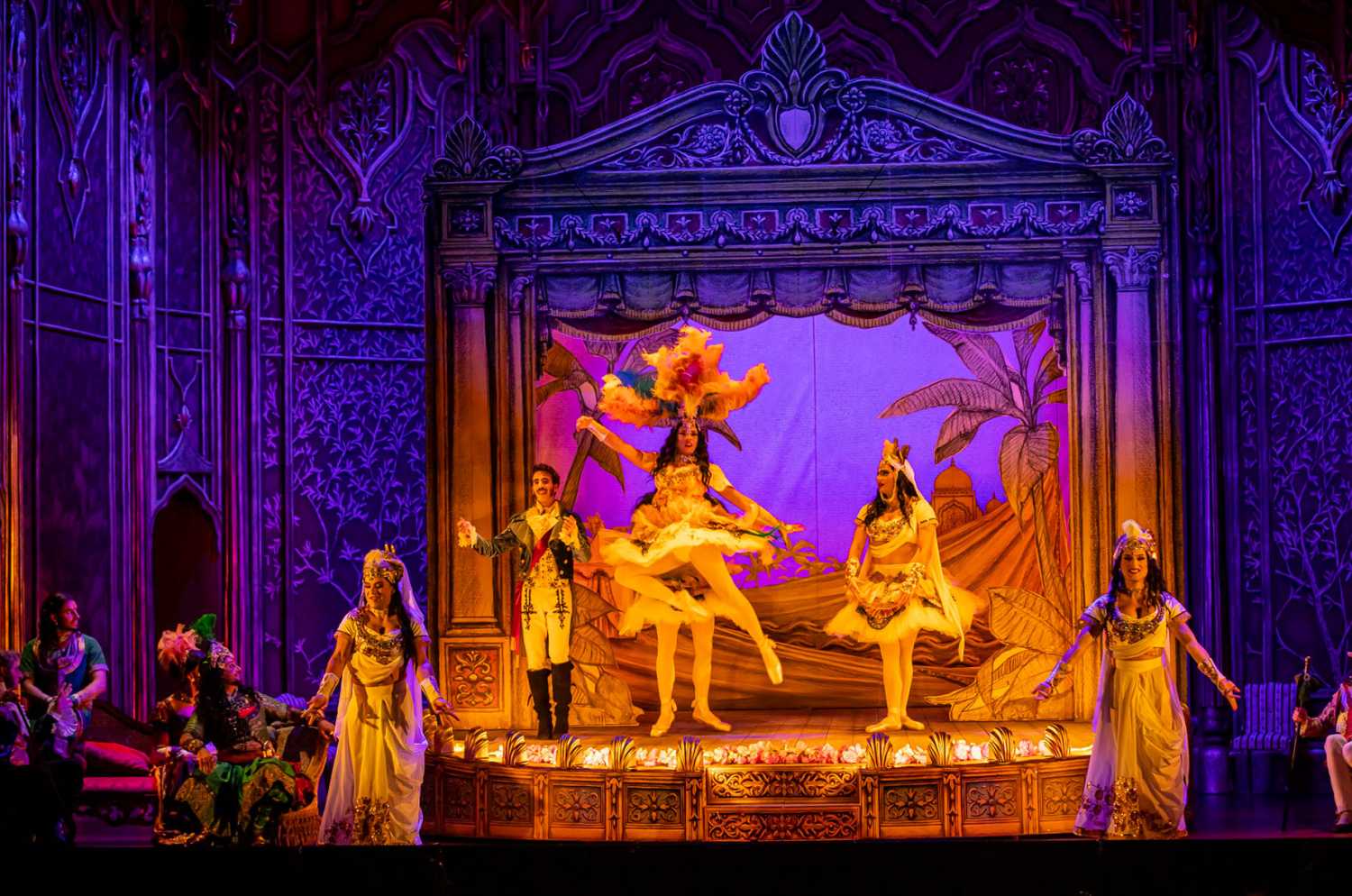Robe colours Bayreuth Baroque Opera Festival
- Details

Three memorable performances directed by Max Emmanuel Cencic, also artistic director of the festival and one of the principals, were staged at the Margravial Opera House (Markgräfliches Opernhaus). Opened in 1748 and declared a UNESCO World Heritage site in 2012, the venue reopened in 2018 after extensive renovations. It is also a museum and is licensed for just 30 live performances per year.
David, from the Lyon-based design practice LJOMA Studio, and Max have worked on several previous projects including the two other Bayreuth Baroque Opera Festivals in 2020 and 2021.
Multiple creative starting points for David’s lighting design included Max’s overall direction of the piece together with Dominico Franchi’s intricate set with its rolling B-stage, and Guiseppe Palella’s elaborate costumes, of all of which brought an air of Bollywood glamour, colour, humour, and fantasy to the stage as the libretto unfolded.
The five-hour performance was set around Alexander the Great’s Indian campaign and his defeat of King Poros in 326 BCE at the Battle of Hydaspes.
Co-ordinating the Festival’s lighting specification and procurement was Kai Fischer who is based locally and works as a freelance and technical production specialist and manager for a range of shows and events. He’s worked on the Bayreuth Baroque Opera festival since its inception for event production company TC Promotion which co-ordinates all the festival’s production requirements.
As the Margravial Opera House can only present 30 live shows a year, there is no house lighting system and all production must be outsourced.
One of David’s stipulations was for colour changing follow spots, which became a driver as Kai looked for flexible LED follow spotting solutions, and this brought him first to the RoboSpot remote follow system.
Robe Germany’s Michael Herrmann recommended he look at a RoboSpot system coupled with T2 Profiles.
As using a RoboSpot system removed the need for operators standing in the tiny FOH spotlight cabin, this also eliminated any potential disruption with show calling and stage management cues being audible over the intercom – a source of intense irritation to notoriously unforgiving opera audiences,
Having two T2 Profiles running on the two RoboSpot systems controlled from a booth backstage was an ingenious solution. They could change colour and, furthermore, when not in use as follow spots, the fixtures could be utilised for other roles in the show.
Impressed with all the T2 Profile features, David and Kai specified another 20 units onto the production which were distributed on the over-stage LX bars 1, 3, 4, and 6, making up the total of 24 x T2 Profiles. These were augmented with 12 x T1 Profiles and 24 x LEDBeam 350s.
Four T1s, one each on two towers each side of the stage, were joined by six on LX2 with the last pair in the very tight stage ‘slip’ positions on the floor.
In the acute angled auditorium slip positions offstage right and left was one LEDBeam 350 a side for very steep front washes, with the rest distributed on over-stage LX bars 1, 3, 4 and 5 where they worked as general stage washing and for specials.
TC Promotion had purchased eight of their own LEDBeam 350s over the summer, and these were boosted with another 16, supplied, together with all the other Robe kit, by rental company Motion Group.
“Everyone was delighted with the choice of lights,” said Kai including the DoP from TV production company Ozango who streamed the Alessandro Nell’Indie performances for broadcaster Arte.
Lighting was programmed by Matthias Schäflein onto an ION Xe console – the two have worked together since the first BBOF.
The 18 artists – six singers, two actors and 10 dancers – were choreographed by Sumon Rudra, and the work was presented in traditional Italian Baroque style, with men playing all the female roles.


















